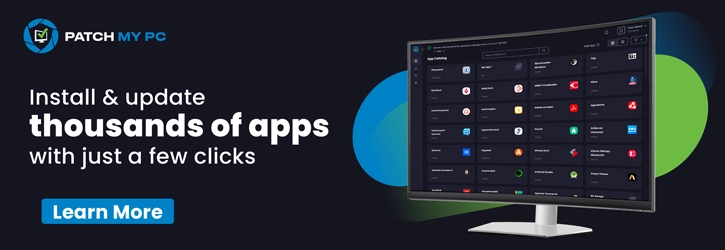Hey there, let’s discuss about enable or disable clear browsing data on exit policy in MS Edge browser using M365 Admin Center. Microsoft Edge doesn’t clear the browsing data by default when it closes. Browsing data includes information entered in forms, passwords, and even the websites visited.
If we enable this policy, all browsing data is deleted each time Microsoft Edge closes. This feature enhances privacy and security by ensuring that information, such as cookies, cached files, history, and form data, is not retained after a session.
If you enable this policy, don’t configure the “Allow Deleting Browser History” or the ” Clear Cached Images and Files on Exit” Policy. Because they all are deal with deleting browsing data. If we configure the preceding policies and this policy, all browsing data is deleted when Microsoft Edge closes. The Clear Browsing Data on Exit policy can be easily configured using Microsoft Intune, providing a simple and effective way to boost privacy and security while ensuring consistent policy enforcement across all managed devices.
Here we are going to deploy the Clear Browsing Data on Exit policy in Microsoft Edge Browser using M365 Admin Center. It allows administrators to enforce automatic deletion of specified browsing data when the browser is closed.
Table of Contents
How to Enable Clear Browsing Data Manually in Edge?

Go to Settings > Privacy, search, and services > Clear browsing data > Choose what to clear every time we close the browser > Type of data (browsing history, cookies, cached files).
Enable or Disable Clear Browsing Data on Exit Policy in MS Edge Browser
This blog post will give detail on how to configure the Clear Browsing Data on Exit policy within the MS Edge browser using the Microsoft 365 Admin Center. Go to Settings and select Microsoft Edge. After that, select Configuration Policies. Click on the +Create policy.
- Microsoft 365 Admin Center > Settings > Microsoft Edge > Configuration Policies > Create Policy.
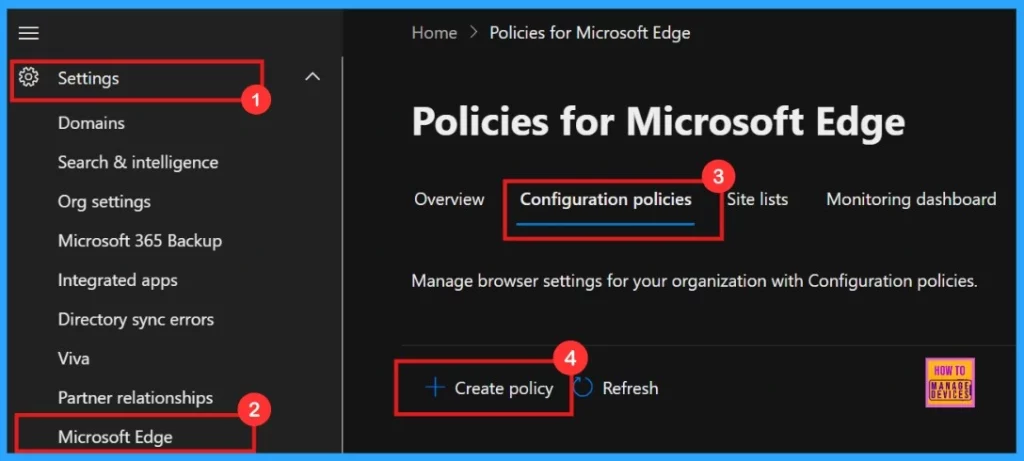
- Enable or Disable Background Template List Updates Policy in MS Edge Browser using M365 Admin Center
- Enable Disable Ask Before Closing a Window with Multiple Tabs Policy in Edge Browser using M365 Admin Center
- Enable or Disable PDF Secure Mode Policy in MS Edge Browser using M365 Admin Center
Basics
When configuring policies in the Basics section, it is important to assign a name and provide a detailed explanation for the policy. Description is not mandatory. But here we gave a description to the policy.
| Name | Description | Policy Type | Platform |
|---|---|---|---|
| Clear browsing data on Exit | To enable the clear browsing data on exit in edge browser | Intune | WIndows 10 and 11 |
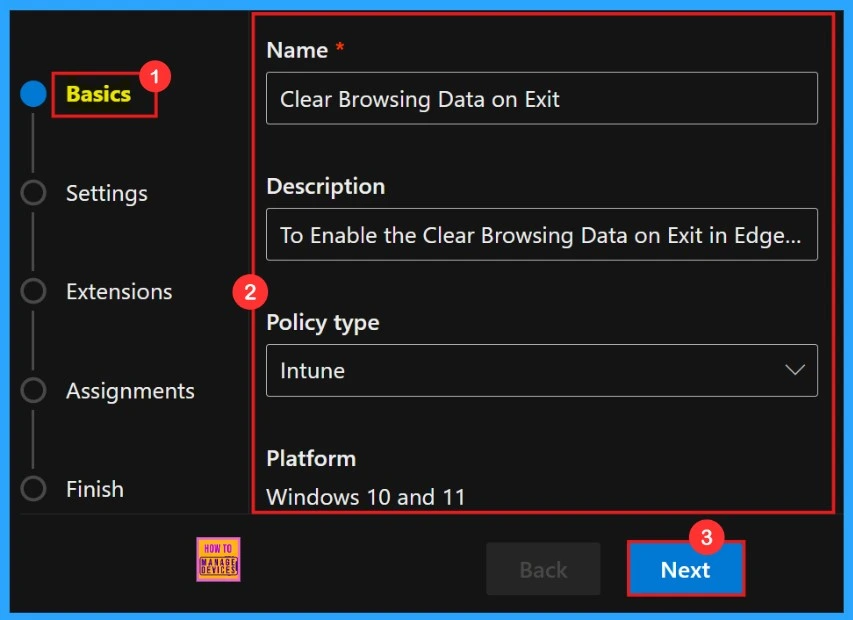
Settings
In the Settings tab, we need to click “Add settings “to configure policies for Microsoft Edge. After clicking the Add settings, we need to search for the policy we want to deploy from Additional settings.
- Click + Add Settings under the Settings tab, then click Next to continue.
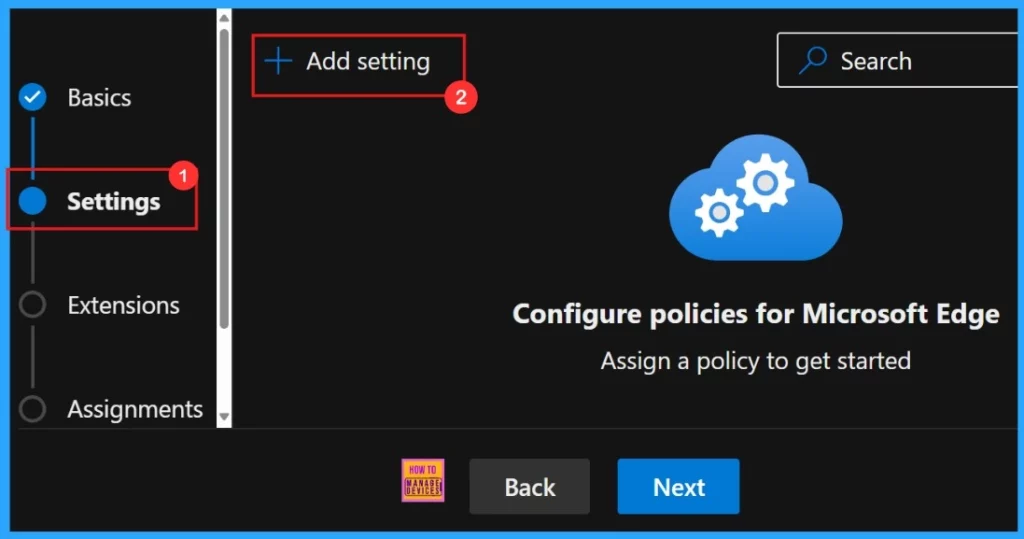
Configure a Setting
To configure the policy, search for it by name. This will open the Value tab, where we can select Enabled and Disabled options. Here we select Enabled to activate the policy’s protective feature, which will prompt users for clear browsing data on closing the browser.
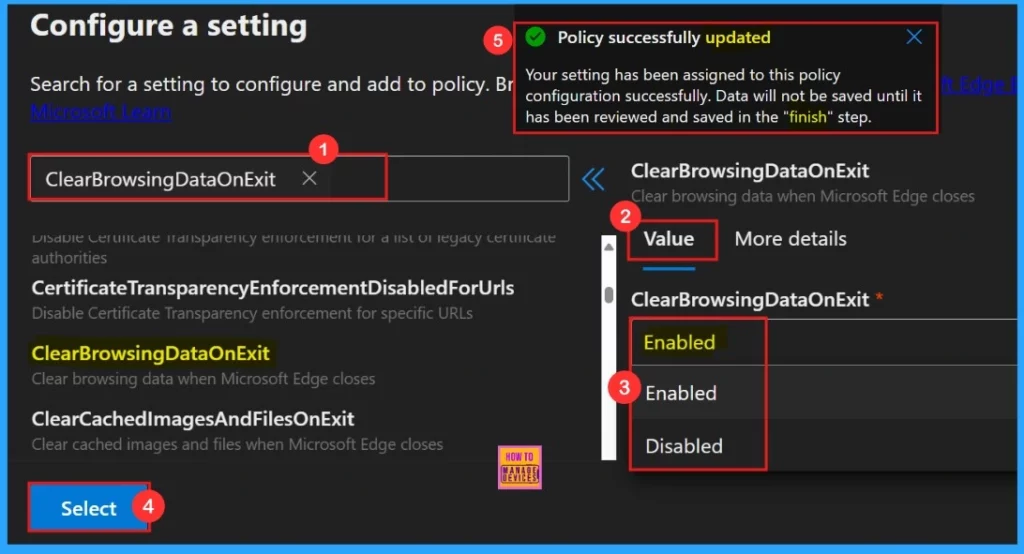
More Details of Policy
To know more about the policy’s purpose and functionality, click “More Details” to view its complete description, including technical specifications and implementation guidance. After understanding the details we can choose whether the policy need to be enabled or disabled.

Settings
To enable the policy, simply select the checkbox next to its name in the list, then click Next to continue with the configuration. This step confirms your selection and moves you forward in the policy setup process.
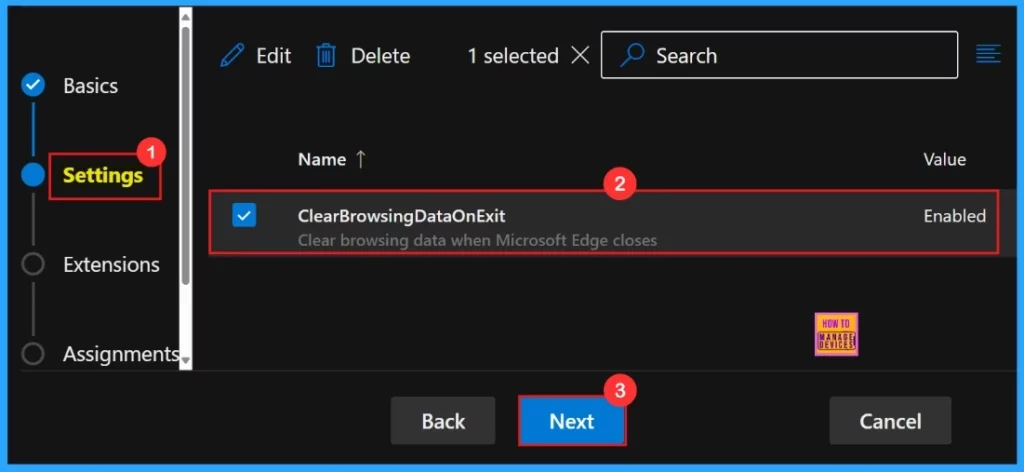
Extensions
The Extensions section lets us customize our policy by adding specific extensions, including settings for installation, permissions, and URLs. If we need more features, just click + Add extension to include them. But if we don’t need any extensions, we can just skip this section.
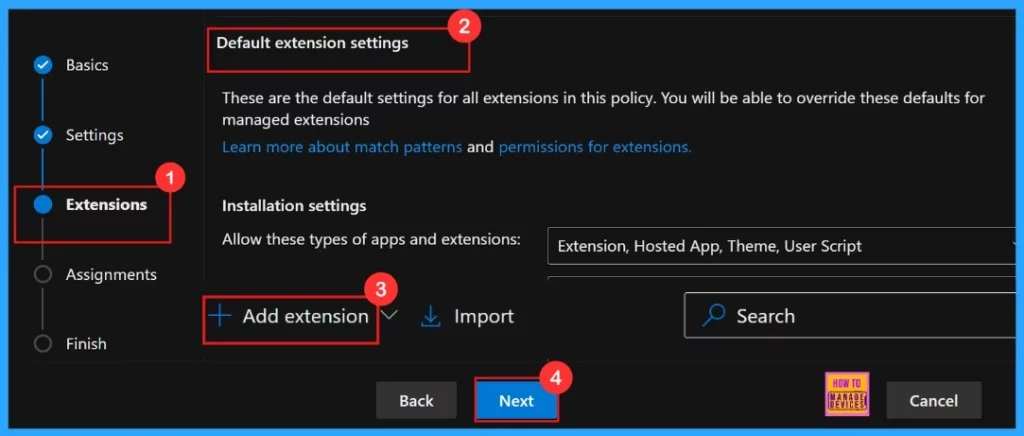
Assignments
The Assignments tab is where we manage who gets our policy. By picking a group, we can make sure the policy only applies to those users or devices.
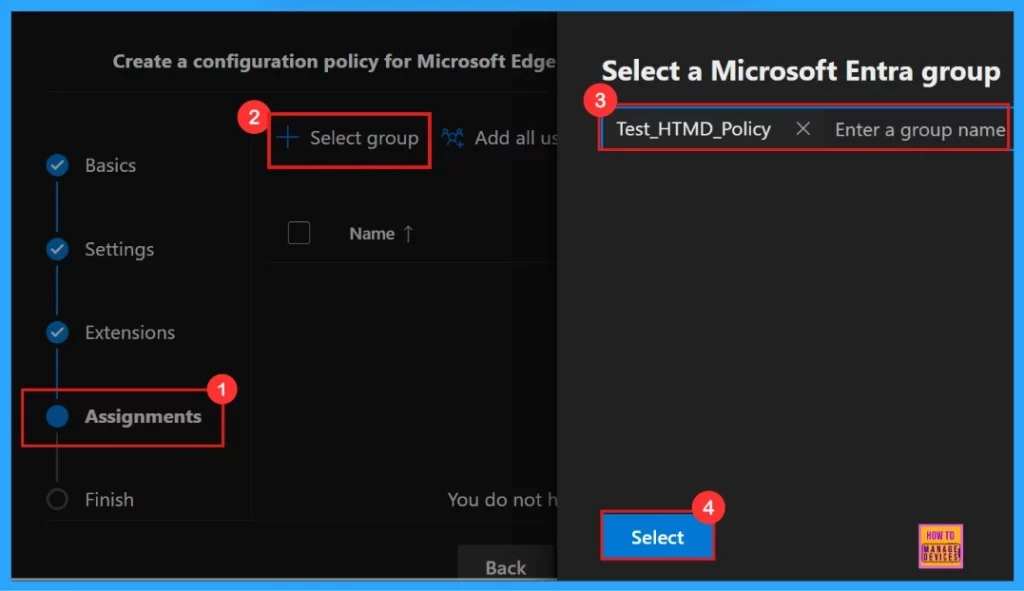
After the selection of the group, a pop-up notification will appear on the page confirming that the group has been updated. Here we assigned the group Test_HTMD_Policy.
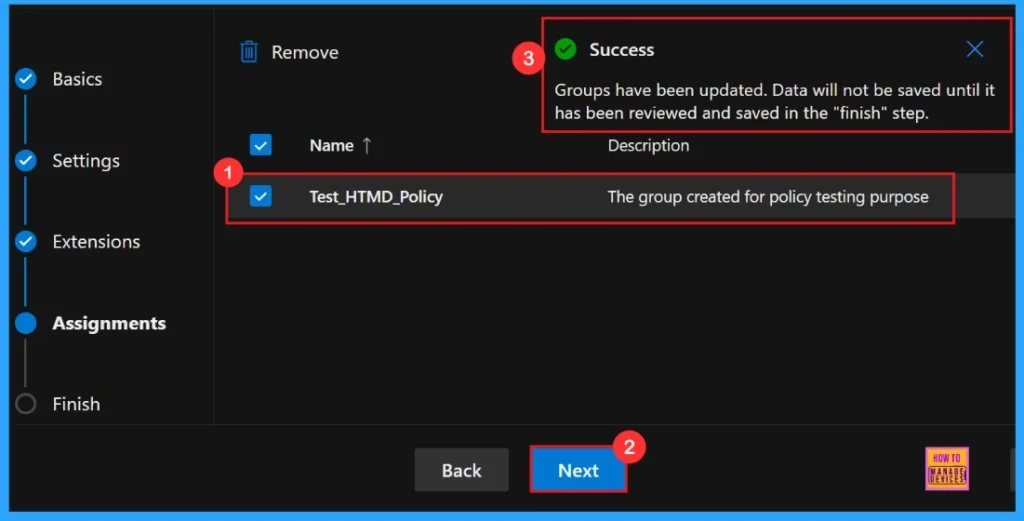
Finish
The final step is to finish setting up of the policy. This is to check all our settings before going to deploy it. The screen shows the options we have configured, like assignments, rules, and exceptions, which lets us do a final quality check. Once we are sure about the information given, click Review + Create.
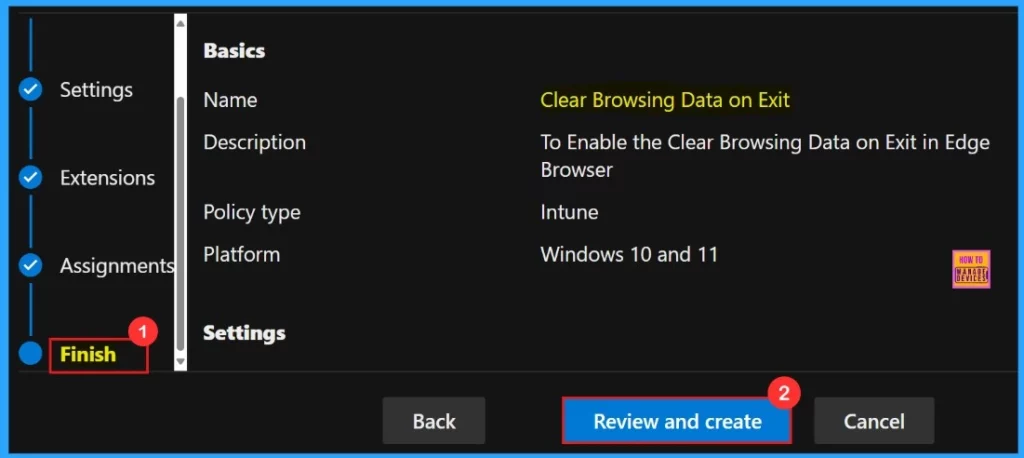
The portal will display a success message confirming that the policy has been created successfully. The new policy will then be visible in the Configuration Policies section.

Device and User Check-in Status
After performing a manual sync on the Company Portal, we can confirm the successful deployment of the policy within the Intune Portal.
- Microsoft Intune Admin Center > Devices > Configuration > Policies > Status > Succeeded
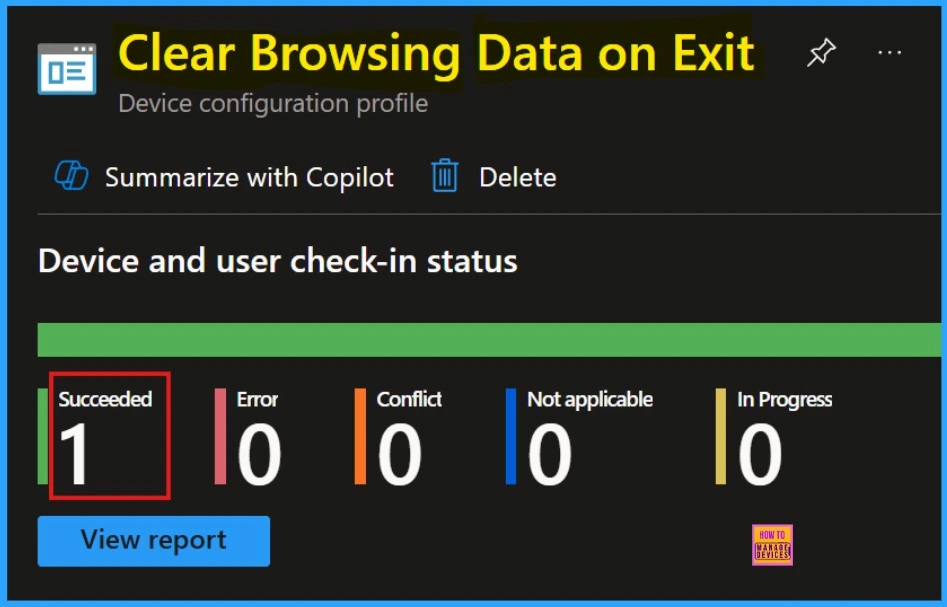
Client Side Verification
After creating the policy, we need to complete the client-side Verification section. Client-side verification offers real-time monitoring of policy through the Event Viewer.
- Applications and Services Logs > Microsoft > Windows > DeviceManagement-Enterprise-Diagnostics-Provider > Admin and filter for Event ID 814.
MDM PolicyManager: Set policy string, Policy: (ClearBrowsingDataOnExit), Area:(microsoft_edgev78diff~Policy~microsoft_edge), EnrollmentID requesting merge: (B1E9301C-8666-412A-BA2F-3BF8A55BFA62), Current User: (Device), String: (), Enrollment Type:(0x6), Scope: (0x0).
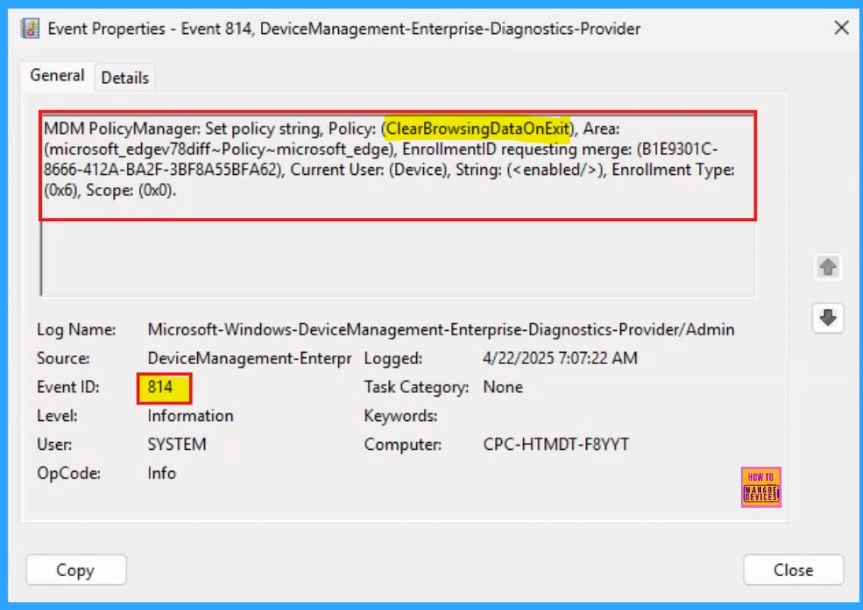
Need Further Assistance or Have Technical Questions?
Join the LinkedIn Page and Telegram group to get the latest step-by-step guides and news updates. Join our Meetup Page to participate in User group meetings. Also, Join the WhatsApp Community to get the latest news on Microsoft Technologies. We are there on Reddit as well.
Author
Anoop C Nair has been Microsoft MVP for 10 consecutive years from 2015 onwards. He is a Workplace Solution Architect with more than 22+ years of experience in Workplace technologies. He is a Blogger, Speaker, and Local User Group Community leader. His primary focus is on Device Management technologies like SCCM and Intune. He writes about technologies like Intune, SCCM, Windows, Cloud PC, Windows, Entra, Microsoft Security, Career, etc.
